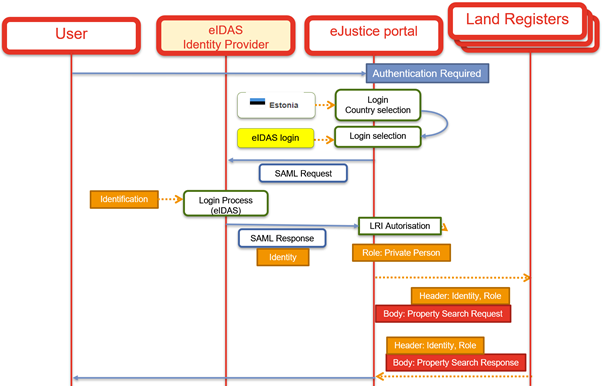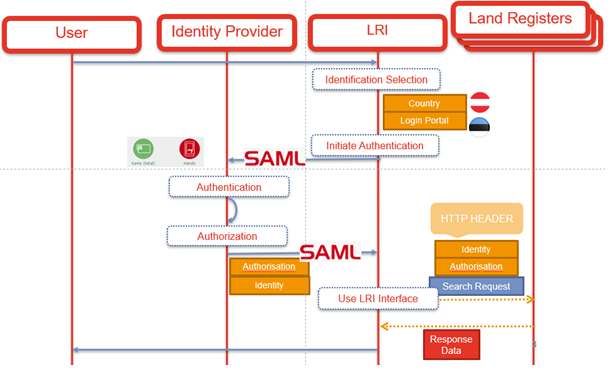
In November and December 2018 the LRI MS Connection project team carried out a detailed analysis of the communication flow and data exchange between the central LRI platform and the respective data platforms of piloting countries Austria and Estonia.
Attention was focused on the details of delivering user authentication data from the LRI platform to the national land registers, and also from one country to another. In the light of eIDAS identification becoming a must-have option among the European Member States and in facilitating the cross-border services, the project partners also considered the possibilities of harnessing the eIDAS functionality and technical specifications. The eIDAS authentication mechanism applies SAML technology for secure data delivery. Therefore the transfer of LRI user information shall also use the SAML technology for delivering user authentication and authorisation data from one menber state to another via the central LRI service.
The project partners have proposed 3 possibilities of exchanging user information between the LRI central platform at the e-Justice portal and the national land registers. In the ideal case all of these 3 process flows demonstrated below could be developed for supporting the provision of the LRI service to the professional users such as court professionals, notaries or other state officials.
The Figure 1 below presents the authentication process for citizens while entering the LRI service platform from the e-Justice portal.

However, based on user-preferences collected during the project, the professional users, who would search for the land register data in relation with their professional duties, would prefer entering the LRI service platfor directly from their professional work environments. In such case the Figure 2 below presents the prefered flow of the user authentication and authorisation data.

In case there is not an existing professional platform, where the professional user would otherwise be authenticated during carrying out his/her professional duties, an alternative option for authentication and authorisation has been envisioned. The professional user would enter the LRI service site at the e-Justice portal. for authorisation as a professional user the LRI service would turn to a respective national authorisation provider, and gain information regarding the professional role of the user, as described in the Figure 3.

These three desired options for user authentication and authorisation have been proposed to the representatives of the European Commission for further consideration. Depending on the outcomes of these discussions the project partners will design the pilot data flow process for the interconnection between the central LRI, the national land registries and perhaps other involved parties.
- Log in to post comments